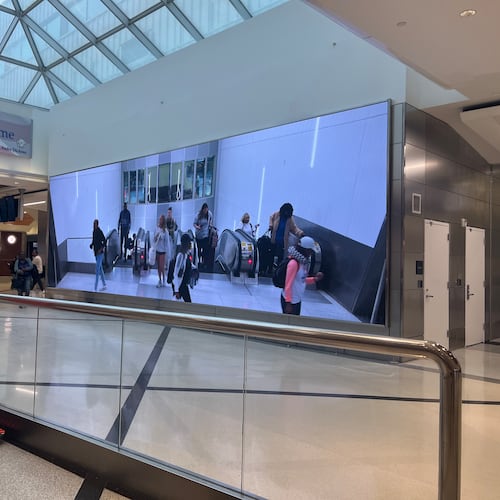Officials at Hartsfield-Jackson International say they want to expand the airport’s 20-year capital improvement plan and spend an additional $4.8 billion on projects.
Projects currently underway include the construction of five more gates on an extension of Concourse T, a new deicing facility, end-around taxiway and Plane Train track extension.
The airport’s master plan rolled out in 2016 has already resulted in about $2.3 billion of work, including the addition of massive lit canopies over the domestic terminal curbsides, new pedestrian bridges, modernization throughout the terminal and concourses, an expanded South security checkpoint, the new ATL West parking deck and ATL Select park-ride lot.
The airport now plans to also widen Concourse D, renovate Concourse E, add cargo facilities, build more domestic gates and reconfigure the Terminal North lobby to reflect shifts in how people check in for flights, among other projects.
A total of $10.8 billion will be spent on all the planned projects.
“We continue to look at refreshing the facility,” said Frank Rucker, deputy general manager of infrastructure at Hartsfield-Jackson.
Rucker made the remarks during the South Metro Development Outlook conference near the airport on Tuesday. “We are, in some cases, noticing significant deterioration in the core infrastructure,” which is about 42 years old, he said.
The airport is also embarking on a more complicated project to upgrade the domestic terminal parking decks, first rehabilitating the structures and then building a new deck where the south economy lot stands. Eventually, the airport plans to rebuild the aging south and north parking decks.
Rucker said airport officials are still negotiating with airlines on the expanded plan. Major carriers — led by dominant Delta Air Lines, which operates the majority of flights — have a significant say in some of the biggest projects at Hartsfield-Jackson since their lease payments and landing fees help pay for the projects.
Some of the projects won’t be completed until as late as 2042, Rucker said.
Still under evaluation is a potential sixth runway. Airlines have switched to larger aircraft that allow them to carry more passengers without adding flights, and there was a sharp cut in flights during the pandemic that disrupted the previous growth trajectory. As a result, flight counts have not yet reached the threshold that would trigger the need for an additional runway at Hartsfield-Jackson.
But passenger traffic is nearing a recovery to pre-pandemic levels, airport officials say.
About the Author
The Latest
Featured


